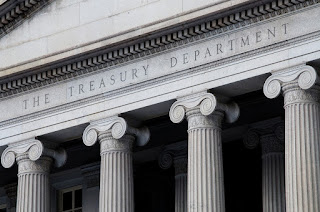The Sarbanes-Oxley Act of 2002 was passed by the United
States Congress as a way to protect investors from the risks of fraudulent
accounting conducted by corporations. This act put strict reforms into place to
improve financial disclosures and prevent fraudulent accounting practices. There
are also regulations within the act that apply to privately held companies,
such as the willful destruction of evidence to interfere with Federal
Investigations.
The need for this Act arose after one too many large-scale
corporate accounting scandals such as Arthur Andersen and Enron. With these big
names in the news for fraud, public confidence became rather shaky.
The bill was signed into law on July 30, 2002 in hopes of
reestablishing some of the public’s trust in corporations. It stands as the
largest-reaching US securities legislation passed in recent years.
The Senate refers to the Sarbanes-Oxley Act as the “Public
Company Accounting Reform and Investor Protection Act,” and the House refers to
it as Sarbanes-Oxley, Sarbox or SOX.
Regardless what you call it, the Act outlines how
corporations must comply with the law. The Act is also intended to add stricter
criminal penalties for certain acts of misconduct.
11 Titles Of Sarbanes-Oxley
There are many details outlined by this monumental Act,
broken down into 11 different titles. Here are the fundamental points from each
title that help make the overall premise more understandable for businesses and
investors.
Title
I: Public Company Accounting Oversight Board
The Public Company Accounting Oversight Board was instituted
in order to manage the audit of all public corporations. The board creates and
sets forth the standards and rules for auditing reports as well as inspects,
investigates and enforces compliance with these rules. The board is also tasked
with central oversight of the independent accounting firms assigned to provide
auditing services.
Title
II: Auditor Independence
In aims of removing conflicts of interest, there are nine
sections within Title II that outline standards for external auditor
independence. For instance, audit firm employees must wait one-year after
leaving an accounting firm to become an executive for a former client. There
are restrictions concerning new auditor approval and auditor reporting
requirements. A company that provides auditing services to a client is not
legally allowed to provide any other services to that same client.
Title
III: Corporate Responsibility
In order to further uphold accountability, regulations
impose all senior executives with the individual responsibility of the accuracy
of financial reports.
Title
IV: Enhanced Financial Disclosures
The Act greatly increases the number of disclosures a
company must make public such as off-balance-sheet transactions, stock
transactions involving corporate officers, and pro-forma figures. All of these
disclosures and more must be reported in a timely fashion.
Title
V: Analyst Conflicts Of Interest
The point of Title V is to improve investor confidence
regarding the reporting of securities analysts. This section includes codes of
conduct as well as the disclosure of any and all conflicts of interests known
to the company. Everything must be reported, such as if the analyst holds any
stock in the company or has received any corporate compensation, or if the
company is a client.
Title
VI: Commission Resources And Authority
Title VI outlines a number of practices including the SEC’s
authority to remove someone from the position of a broker, advisor or dealer
based upon certain conditions.
Title
VII: Studies & Reports
Title VII outlines certain studies and reports the SEC and
the Comptroller General must perform. These tests and reports include analyzing
public accounting firms, credit rating agencies and investment banks to ensure
they do not play a role in facilitating poor/illegal practices in securities
markets.
Title
VIII: Corporate and Criminal Fraud Accountability
Any alterations, concealment or destruction of records in
hopes of influencing the outcome of a Federal investigation is punishable by
fines and up to 20-years in prison. Anyone that plays a role in defrauding
shareholders of publicly traded companies is subject to imprisonment and fines.
Title VII also outlines special protections for whistle-blowers.
Title
IX: White Collar Crime Penalty Enhancement
There are 6 sections in Title IX, all in aims of increasing
criminal penalties for white-collar crimes. This Title adds failure to certify
corporate financial reports as a criminal offense, and encourages stronger
sentencing guidelines in hopes of making punishments outweigh the potential for
quick financial gains.
Title X: Corporate Tax Returns
Section 1001 from Title X mandates the need for the Chief
Executive Officer to sign company tax returns.
Title XI: Corporate Fraud Accountability
Title XI includes seven sections dedicated to
defining corporate fraud. It defines any tampering of records as a criminal
offense punishable under specific penalties. It also outlines sentencing
guidelines and increases overall penalties. This particular Title gives the SEC
the ability to freeze transactions considered “large” or “unusual.”

No comments:
Post a Comment